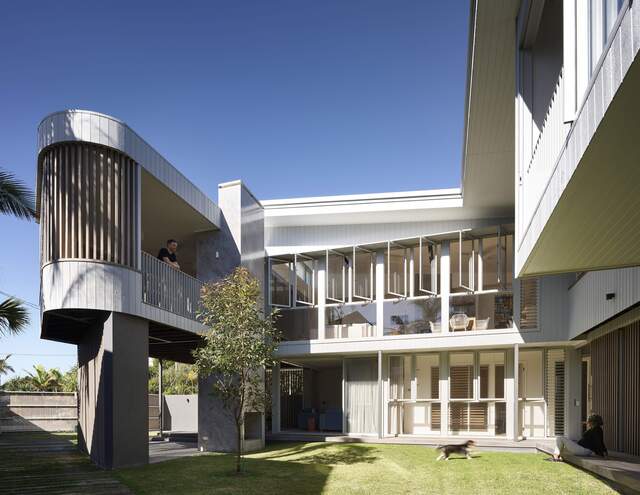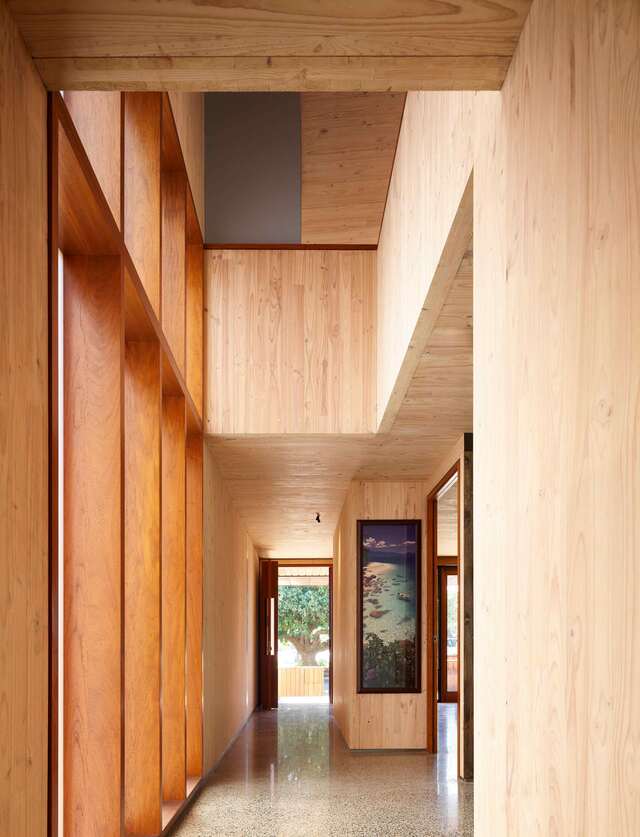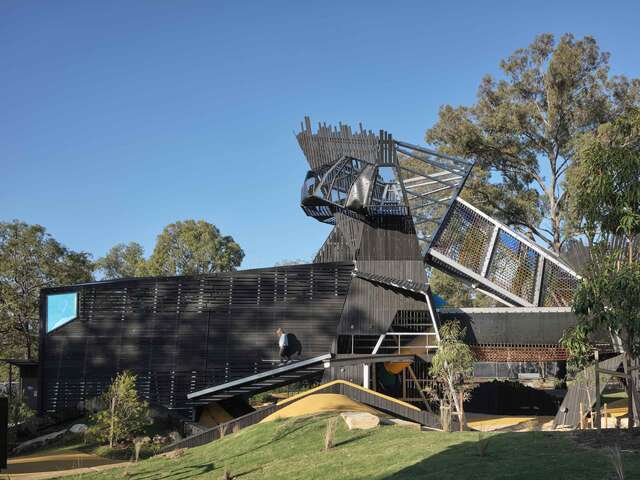
The Australian Institute of Architects celebrated Queensland’s best architecture for 2024, at their annual State Awards ceremony on Friday night at Brisbane’s City Hall.
The State Awards jury, a collective of respected architects and design industry leaders from across Queensland, awarded more than 42 projects across 20 categories including public, residential, education, sustainable architecture and urban design.
On the Sunshine Coast, Moffat Beach House designed by KIRK received a State Award for Residential Architecture, and Corymbia, designed by Noosa based Tim Ditchfield Architects, received a State Commendation.
Children and families emerged as the real winners of the evening.
A standout theme of many of the successful projects were designs that were inclusive for a range of households – including young children and teenagers through to intergenerational families.
The Queensland Architecture Medallion, the highest honour of the evening, was awarded to Bradbury Park Playscape designed by Alcorn Middleton.
The Playscape, located in Kedron on Brisbane’s northside, also won The FDG Stanley Award for Public Architecture, and The Karl Langer Award for Urban Design.
The Playscape provides opportunities for different modes of play with challenging high activity zones, social areas, and quiet hide-away spaces. The result is a playground that caters to young children, as well as teens – an age group often over-looked in the design of public spaces.
The jury described the project as a “delightful and democratic sculpture that invites visitors from afar, drawing them towards a myriad of enchanting spaces. By emphasising play for all ages and abilities, this project exemplifies the transformative power of architecture”.
Alcorn Middleton were commended by the jury for their exceptional merit in designing a public space that encourages community engagement across all levels. The jury stated “this project sets a new benchmark for public playgrounds, highlighting the significance of creativity and inclusivity in outdoor recreational spaces”.
Andrew Noonan Architect won The Harry Marks Award for Sustainable Architecture for their design of 39S House.
The jury said that the project “transforms a traditional Workers Cottage to achieve the lowest whole-of-life carbon impact possible”.
Science, Technology, Engineering, Arts and Design, Mathematics (STEAM) facilities took a prominent position in the Educational Architecture category, showing a strong focus towards collaborative learning approaches between teachers and students.
The STEAM Precinct at Brisbane Grammar School, designed by Wilson Architects, was honoured with The Jennifer Taylor Award for Educational Architecture and received a Commendation for Interior Architecture. The jury noted, “by taking a holistic approach to multidisciplinary learning requirements, the architects have skillfully created evocative, adaptable, and dynamic learning spaces.”
Marjorie Dixon and Leah Gallagher of KIN Architects were awarded the Queensland Emerging Architect Prize. The founders of KIN Architects were recognised by the jury for their immense contribution to the profession. “With an emphasis on giving back to the profession and the future generations of architects, both volunteer their time and expertise to countless initiatives.”
Ipswich Hospital Mental Health Acute Inpatient Services, designed by Hassell was praised by the jury for “upholding a new model of mental health care”.
The holistic design earned The GHM Addison Award for Interior Architecture and the State Award for Public Architecture from the jury, for “providing comfort in a calm setting, promoting recovery and normalising mental health care”.
UQ Brisbane City, designed by BVN with Architectus Conrad Gargett, received accolades across three categories: The Don Roderick Award for Heritage Architecture, the State Award for Educational Architecture, and a Commendation for Interior Architecture.
Internationally recognised as one of the most influential houses of the 20th century, C House by Donovan Hill rounded out the named awards with The Robin Gibson Award for Enduring Architecture. The jury noted that “the C House’s impact on architectural discourse and practice cannot be overstated.”








